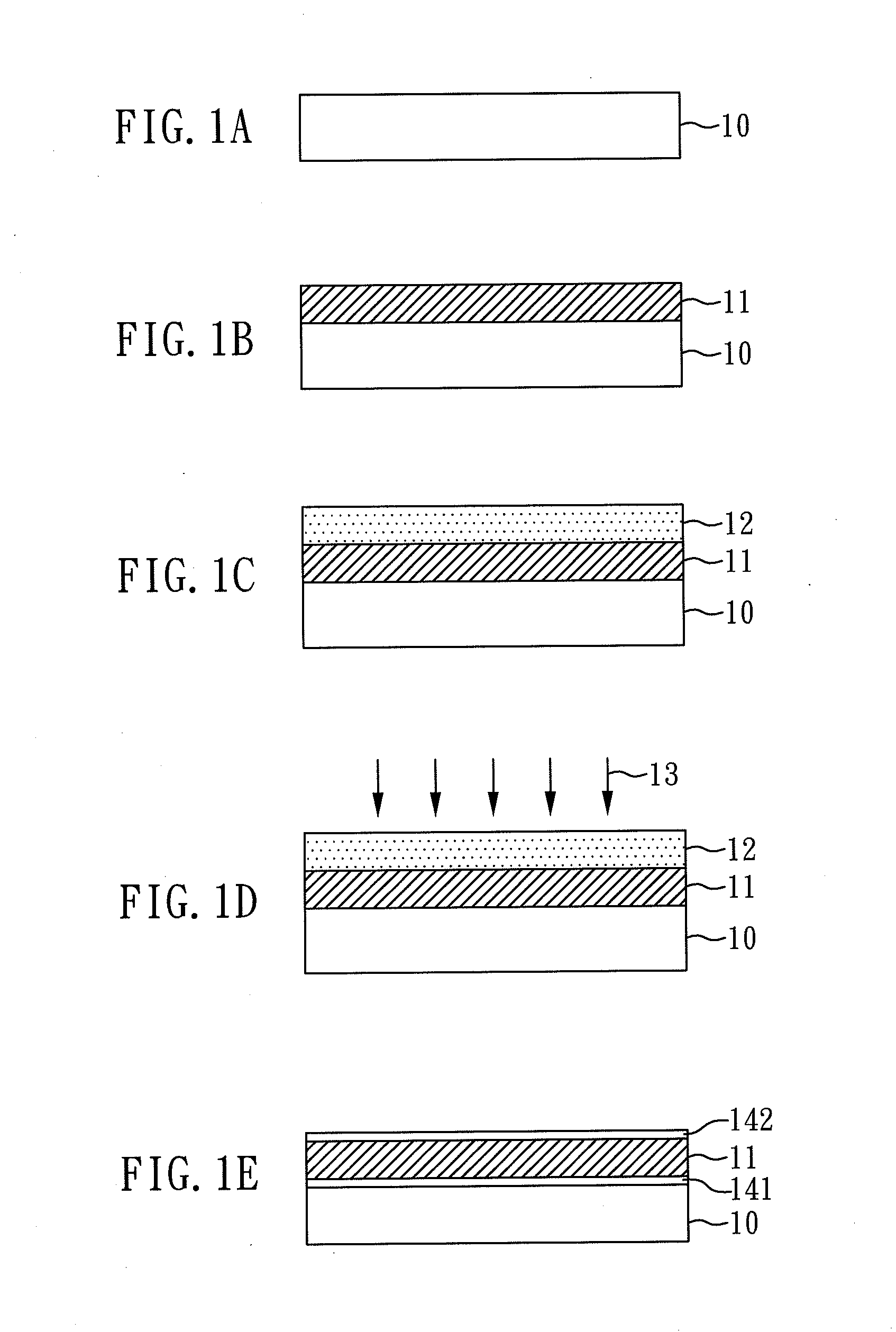Process of preparing graphene by low-frequency electromagnetic wave
a low-frequency electromagnetic wave and graphene technology, applied in the direction of superimposed coating process, coating, material nanotechnology, etc., can solve the problems of difficult to achieve rapid cooling rate, unnecessary energy consumption, and removal of a large amount of thermal energy, and achieve easy control of processing temperature, short processing time, and low energy consumption
- Summary
- Abstract
- Description
- Claims
- Application Information
AI Technical Summary
Benefits of technology
Problems solved by technology
Method used
Image
Examples
embodiment 1
Preparation of Graphene Layers
[0032]First, referring to FIG. 1A, there is provided a substrate 10, and then a metal layer 11 is evaporated onto the substrate 10 (see FIG. 1B), wherein the substrate 10 is made of silicon oxide and the metal layer 11 is made of nickel which has a thickness of 50 nm in this embodiment. In addition, the conditions of a metal layer-forming evaporation procedure, comprising: 5×10−6 torr degree of vacuum, and the evaporation rate is 0.3-1 Å / s.
[0033]Next, referring now to FIG. 1C, a carbon-containing layer 12 is formed on the metal layer 11. In this embodiment, a disordered carbon is used as carbon source, and then deposited by electron beam evaporation method to form the carbon-containing layer 12 on the metal layer 11, and the carbon-containing layer 12 has a thickness about 20 nm. Further, the conditions of the carbon-containing layer procedure, comprising: 5×10−6 torr degree of vacuum, and the evaporation rate is 0.3-1 Å / s. Now the silicon oxide substra...
PUM
| Property | Measurement | Unit |
|---|---|---|
| thickness | aaaaa | aaaaa |
| thickness | aaaaa | aaaaa |
| frequency | aaaaa | aaaaa |
Abstract
Description
Claims
Application Information
 Login to View More
Login to View More - R&D
- Intellectual Property
- Life Sciences
- Materials
- Tech Scout
- Unparalleled Data Quality
- Higher Quality Content
- 60% Fewer Hallucinations
Browse by: Latest US Patents, China's latest patents, Technical Efficacy Thesaurus, Application Domain, Technology Topic, Popular Technical Reports.
© 2025 PatSnap. All rights reserved.Legal|Privacy policy|Modern Slavery Act Transparency Statement|Sitemap|About US| Contact US: help@patsnap.com



